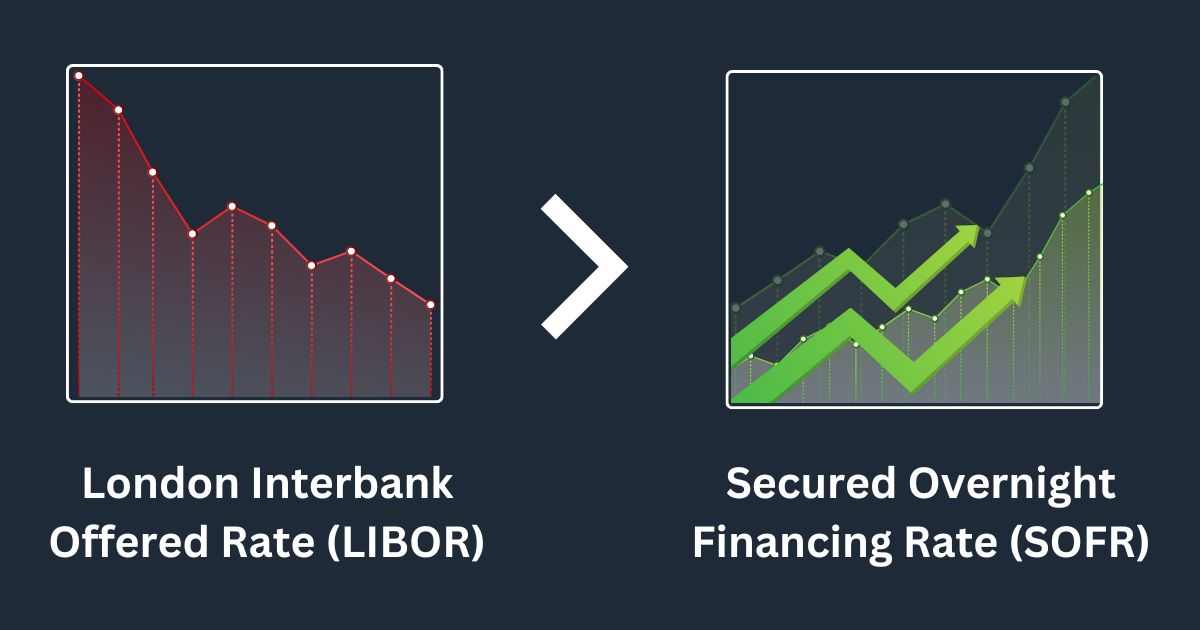The London Interbank Offered Rate (LIBOR) has long been a global benchmark for financial transactions, influencing everything from mortgages to business loans. However, due to its phased discontinuation, businesses, especially SMEs, need to understand the implications and prepare for alternative benchmarks like the Secured Overnight Financing Rate (SOFR) and the Modified Mumbai Interbank Forward Outright Rate (MMIFOR).
What is LIBOR?
LIBOR was an average of the interest rates estimated by major banks in London that banks would charge each other for loans. It served as a foundational rate for various financial instruments globally. However, following a series of controversies and its role in the financial crisis, LIBOR is being phased out.
LIBOR was earlier used as a crucial yardstick to settle trades in futures, options, swaps, and other derivative financial instruments in over-the-counter markets and on exchanges globally.
It used to be a key interest rate benchmark for consumer lending products including mortgages, credit cards and student loans. Further, derivatives, bonds, loans, securitizations, deposits, and other products too use it as a benchmark rate.
In 2012, it was discovered that several global banks had conspired to manipulate the LIBOR. The LIBOR also deepened the 2008 financial crisis. Following this, various central banks and regulatory authorities moved away from the benchmark.
On March 05, 2021, The Financial Conduct Authority (FCA) of the United Kingdom announced that all LIBOR settings (interest rates) will either cease to be provided or no longer be representative.
The FCA said the LIBOR will discontinue after December 31, 2021, in the case of all Pound Sterling, Euro, Swiss Franc, and Japanese Yen settings, in addition to the 1-week and 2-month US Dollar settings. It said that the remaining US Dollar settings would cease to exist after June 30, 2023.
What Is RBI’s Stance On LIBOR?
In May last year, the Reserve Bank of India (RBI) asked banks and other regulated entities to take measures to ensure a complete shift or transition from LIBOR from July 1, 2023.
Banks were directed to ensure that no new transaction undertaken by them or their customers relies on or is priced using the USD LIBOR or the Mumbai Interbank Forward Outright Rate (MIFOR).
In a press release dated May 12, 2023, the RBI said, “With the concerted efforts of banks/FIs as well as industry associations like the Indian Banks’ Association, a smooth transition with respect to LIBOR settings that have ceased to be published/become non-representative after December 31, 2021, has been achieved. The transition away from LIBOR was also facilitated by the continuing publication of US$ LIBOR settings in five tenors which provided a longer transition period particularly for the insertion of the fallback clauses in legacy financial contracts that reference LIBOR.”
The RBI said that new transactions will now be predominantly undertaken using ARRs such as the Secured Overnight Financing Rate (SOFR) and the Modified Mumbai Interbank Forward Outright Rate (MMIFOR).
The bank said, “After June 30, 2023, the publication of the remaining five US$ LIBOR settings will cease permanently. While certain synthetic LIBOR settings will continue to be published after June 30, 2023, the Financial Conduct Authority (FCA), UK, which regulates the LIBOR, has made it clear that these settings are not meant to be used in new financial contracts. The MIFOR, a domestic interest rate benchmark reliant on US$ LIBOR, will also cease to be published by Financial Benchmarks India Pvt. Ltd. (FBIL) after June 30, 2023.”
Banks/FIs are advised to ensure that no new transaction undertaken by them or their customers relies on or is priced using the US$ LIBOR or the MIFOR. Banks/FIs are also advised to take all necessary steps to ensure the insertion of fallbacks in all remaining legacy financial contracts that reference US$ LIBOR (including transactions that reference MIFOR).
The End of LIBOR and What It Means for Your Business
As of June 30, 2023, the majority of LIBOR rates have ceased, with transitions to alternative rates like SOFR already in place. This change affects any financial product tied to LIBOR, from business loans to credit facilities, impacting how interest rates are calculated and charged.
What Replaces LIBOR?
The Secured Overnight Financing Rate (SOFR) and the Modified Mumbai Interbank Forward Outright Rate (MMIFOR) are two of the primary rates replacing LIBOR. SOFR, linked to US Treasury market transactions, offers a more robust and transparent mechanism to set interest rates.
What is SOFR?

In the US, Libor has been replaced by a new interest rate benchmark called Secured Overnight Financing Rate, or SOFR. SOFR is based on the actual market activity and is not dependent on a few firms to set the rates. Financial institutions use SOFR as a benchmark to price loans for businesses and consumers. SOFR is based on the rates that big financial institutions pay each other for overnight loans.
Understanding Impact Of LIBOR Transition On Banks & Companies
When pricing international transactions and issuing financial instruments, banks used to employ benchmark rates such as LIBOR. Now, with the transition, Banks will need to update their agreements and processes.
Experts believe that, unlike Libor, SOFR is a secured rate, as it was based on transactions that involve collateral, so the rates did not carry credit risk premiums.
The LIBOR transition may impact existing products and any future contracts that used the benchmark as a reference rate, systems and processes, and tax and accounting treatment.
Check Your Credit Score in Free
Implications for SMEs:
- Review Your Contracts: Check existing financial agreements for references to LIBOR. Understand how its cessation affects these contracts and what your options are.
- Understand the New Rates: Learn how SOFR and MMIFOR are calculated and how they differ from LIBOR. This understanding will help you better negotiate terms and anticipate changes in interest costs.
- Consult Financial Experts: Engage with financial advisors to ensure your business transitions smoothly. OneNDF offers consultations and resources to help navigate these changes effectively.
How OneNDF Can Help?
At OneNDF, we are committed to guiding SMEs through complex financial landscapes. Our experts are ready to help you understand these changes and adapt your financial strategies accordingly. We provide tools, resources, and advice tailored to SME needs, ensuring your business remains secure and competitive.
Call to Action:
Don’t navigate this transition alone. Contact OneNDF today to get expert advice and tailored solutions that protect and advance your business interests. Stay ahead of financial complexities with a partner you can trust.
















